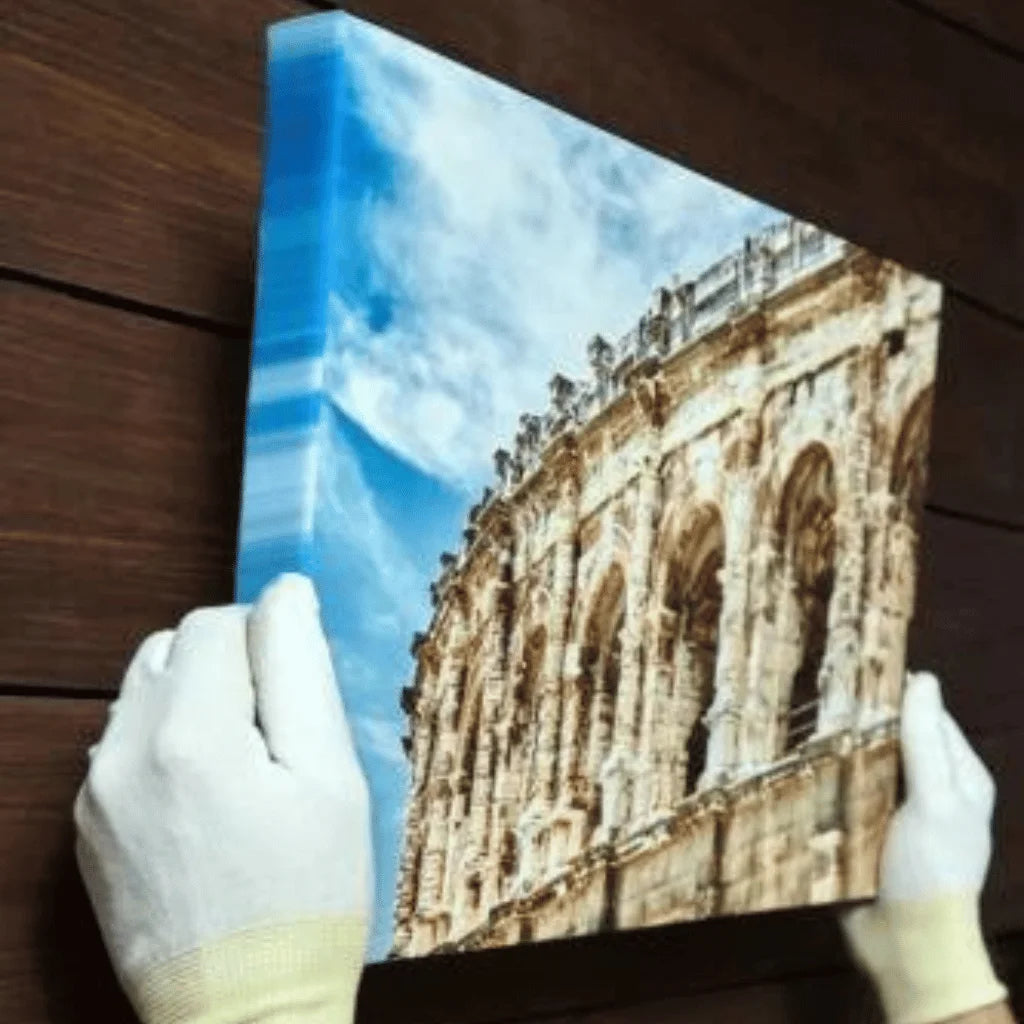
How to clean a canvas

You may be confident in the quality of our canvas prints when you pick us to make them for you. There is a lifetime guarantee, and we employ cutting-edge printing techniques to ensure that your product looks fantastic. We know you’ll enjoy hanging it on the wall for years to come, so it’s natural that you’ll want to maintain it looking its best at all times. Another big advantage of having photographs on canvas is that they are very simple to clean and maintain, so you can use these simple methods to keep your prints looking fantastic.
Step 1: Use soft dusting techniques.
It is critical to keep your canvas pictures dusted. A mildly wet towel should sufficient for the majority of cleaning tasks. A soft cloth, like cotton or microfiber, works best and will keep your item from becoming damaged. While using a cloth, never spray water directly onto your work of art. Instead, dampen the towel and softly rub it over the canvas print. Another option for dusting the front of the poster is to use a very soft wire brush, such as a designer’s brush.
Step 2: Stay away from chemicals.
The following approach should sufficient to keep your print looking excellent. However, accidents sometimes happen, so if you want a different technique to clean your canvas, you have alternative possibilities. Always keep in mind that strong chemicals and home cleansers will most likely do even more harm, so avoid them if at all feasible. If your print requires a deeper clean as a result of an accident, it is best to contact a specialist art shop, which will be able to supply you with the contact information for a professional art cleaner.
Step 3: Hang your canvas up in the right place.
Certain places are better suited for displaying canvas prints. You should attempt to avoid hanging it in humid areas, such as tiny restrooms or places with poor air circulation. If you want to improve the odds of your canvas looking great for as long as possible, choose a location with lower humidity and fewer temperature changes. Canvas prints have also been made to be used indoors. You may keep your canvas outside for gatherings or parties, but after they’re finished, the print will be considerably more protected indoors. If you must take the canvas print outside, avoid exposing it to direct sunlight.
How to waterproof a canvas
When summer here, we’ll be spending more time outside, and you’ll want the perfect outdoor sanctuary to unwind after a hard day at work. You may draw influences from your inside design to create the perfect outdoor space. You may relocate some of your favourite works of art from the house to the porch or patio. There is some preliminary work to be done before, so let us teach you how to waterproof a painting for outdoor use; it is quite simple and won’t take long.
All of the materials you’ll need may be obtained at any art supply store or online.
- A work of art
- Polyurethane spray sealer
- Modification Clear acrylic sealant by Mod Podge
Sealing the Frame.
To begin, apply the polyurethane spray sealer to coat the canvas’s frame. Rollback and tape down any slack canvas on the rear, being careful to completely cover the frame. You should let it dry completely; leaving it overnight should enough.
Step 2: Sealing the Canvas.
Now, to ensure that the canvas is well coated, spray the entire item, front and back, with Mod Podge. You should follow the directions on the container and spray in a well-ventilated area. To be on the safe side, re-spray the canvas when it has fully dried. You want your porch to appear nice so that the weather doesn’t ruin your artwork.
Step 3: Final stage.
If your piece of art is white, avoid using a polyurethane spray since it might leave a yellow tinge. Instead, spray only the frame. This was designed to protect outdoor furniture, not art, so use it with caution.
While Mod Podge includes both an outdoor sealer and a transparent acrylic sealer, using the outdoor sealer is not a smart idea. The outdoor sealer might leave a sticky coating on your canvas that is unsightly. The transparent sealer works exactly as well as the black sealer and is much easier to use. You can use both if you like but apply the acrylic sealer first to seal the painting and prevent the sticky residue.





